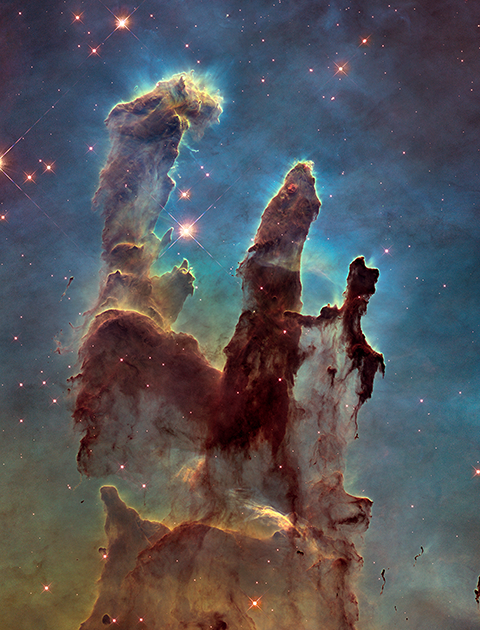
M16, Pillars of Creation in Visible Light
Astronomers used the Hubble Space telescope to revisit one of its most iconic subjects, the so-called "Pillars of Creation" in the Eagle Nebula (M16). Three towers of gas and dust, standing light-years tall, are giving birth to new stars, buried within their dusty spires. The pillars became famous after Hubble first imaged them in 1995 using the Wide Field and Planetary Camera 2. The features were observed again in late 2014 with that instrument's more advanced replacement, the Wide Field Camera 3. With its higher resolution, the new camera provides a sharper view of the pillars and also presents a wider vista, showing the base of the pillars and more of the region surrounding them. In addition, the new observations captured a portrait of the pillars in infrared light, as well as in visible light. The longer wavelengths of infrared light pass more easily through the dusty environs, allowing us to see more of the wispy details and the stars normally hidden inside or behind the pillars when viewed in visible light. By comparing Hubble's original image of the pillars to the new one, astronomers also noticed changes in a jet-like feature shooting away from one of the newborn stars within the pillars. The jet grew 60 billion miles longer in the time between observations, suggesting material in the jet was traveling at a speed of about 450,000 miles per hour. Such observations of the details and changes in the pillars of the Eagle Nebula, and of observations near and far throughout the universe, have been made possible by Hubble’s viewpoint beyond Earth's atmosphere, by its technical upgrades over the years, and the longevity of its career. For more information please visit: hubblesite.org/contents/news-releases/2015/news-2015-01.html
